Portraits and Landscapes
Death Valley National Park
It was twilight. Almost. The setting sun visible between two peaks of a mountain range, reminding one of the crayon masterpieces that kindergarten kids wave into existence. The clear, blue, and cloudless sky of the day somehow transforms into a haze of purple and diffused pink. The flat desert terrain encapsulated by towering, slaty mountains, almost the color of obsidian in the play of glows and shadows. I had picked up a fragment of the black glass just that morning, a treasured keepsake from a harsh land.
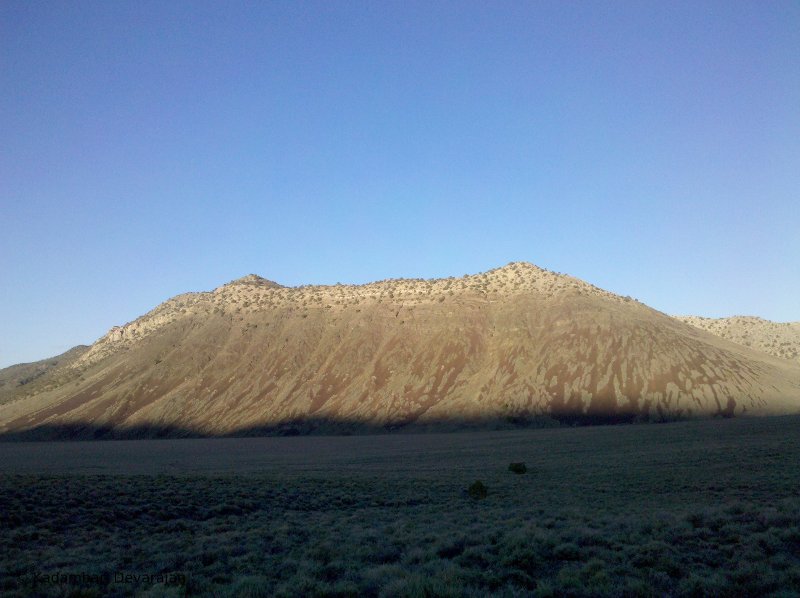
Shadow play
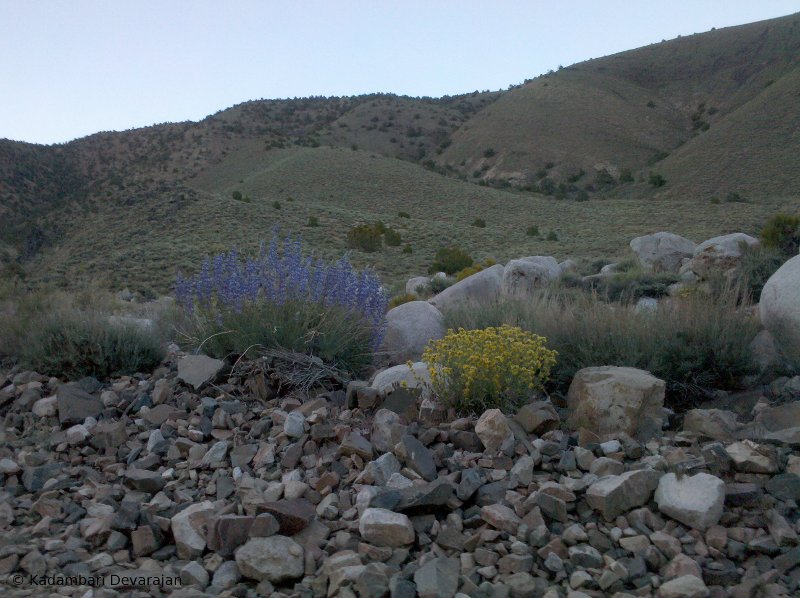
The colors of triumph

Purple haze
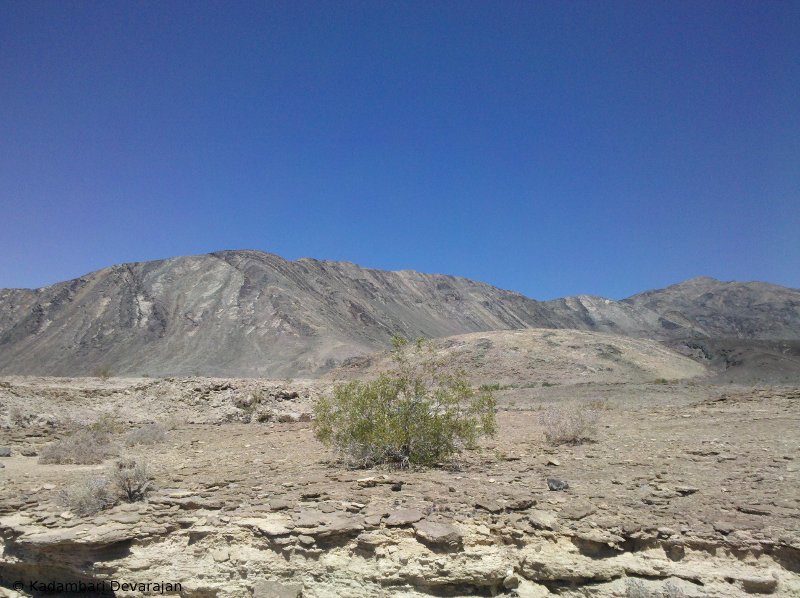
A desert withers
We were in the Saline Valley, an arid landscape in the rain shadow of the massive Sierra-Nevada mountains in California. This was now officially a part of the Death Valley National Park, the northern outpost of the Mojave desert's three national parks. Any imagery that comes to mind when you think of the Death Valley is vastly representative of the region. An average visual would involve sand dunes, shrubs that speckle an almost alien landscape, and not a soul as far as the eye can see. This would not be far off the mark. The name might be a tad too harsh though, with the prospectors during the Gold Rush to be blamed for the misnomer. The name notwithstanding, there are statistically far fewer deaths here than in your average American town.
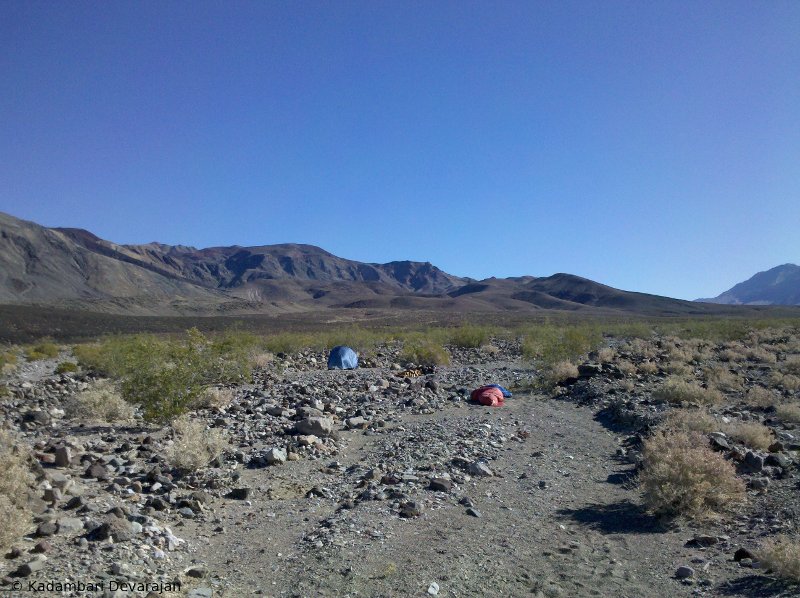
The campsite
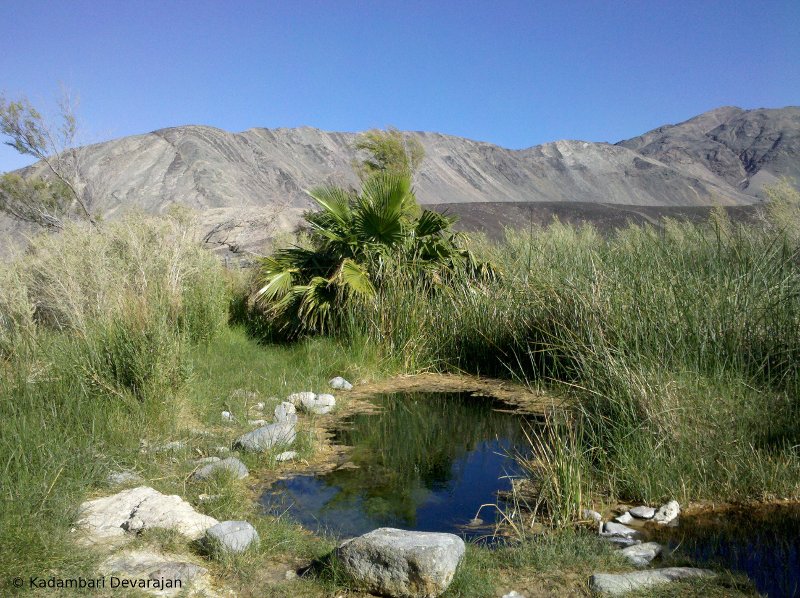
The secluded hotsprings
We were in the company of close friends, veterans of the area, who wanted this Indian couple to experience the Great American Outdoors. Our long-weekend camping trip in the summer of 2010 to the Death Valley National Park also traversed the ghost town of Bodie, the picturesque little town of Bridgeport -- the gateway to the desert, the mysterious Lake Mono and her curious tuftas, setting up camp in the remote but spectacular Saline Valley, lazing around in the three lovely natural hot springs - gorgeous oases in the middle of the desert, and returning to Oakland via the Yosemite National Park, with lots of adventure thrown in for good measure.
It was our second day there. We had met a host of colorful personalities at the hot springs, which being an oasis in the desert attracted a smattering of people who would amble in like animals to a watering hole in the African savannah. Not far from the entrance were some signposts. One read 'Bare Crossing' in bold black letters, while the other said 'Clothing Optional'. If you were wearing a swimsuit, you were deemed overdressed. To add to the excitement, an ultra-light plane landed right on the flat desert, in the absence of an airstrip. A couple stepped out and announced that they had 'swung by' for an impromptu picnic.
After a day of delightful lazing in the most 'developed' of the hot springs, we decided to head back to base camp, which had been set up near the farthest of the hot springs and one that attracted a surprising number of bats. And thankfully no throngs of people. Somewhere towards the middle of this route between the two hot springs, stood a gnarled old man by an easel and surrounded by an assortment of paintings, tubes of paint, brushes of varying sizes, all kinds of art paraphernalia, and some camping odds and ends. The back of his dusty SUV was propped open, with a curious arrangement of grab-n-go art stuff. We decided to stop and chat, primarily because of the paintings haphazardly strewn all around the car, almost arranging themselves in a natural gallery with the sublime lighting of the setting sun to boot. The fact that he was the first fully-dressed person we had seen in more than a day might have also had something to do with it.
He was facing the sun, or rather, he was facing the easel which in turn had the scenery he was trying to capture as backdrop with the intrusive sun encroaching upon it. He was wearing a dirty full-sleeve shirt that must have once been a healthy white, loose knee-length work pants in khakhi, and an apron streaked with dull fingerprints - vestiges of occasional hand-wiping. The apron's current condition made it almost impossible to guess the original color of the cloth. Comfortable suede shoes, a rather tame cowboy hat that would have been of scant protection in the sun especially if it were at its vicious best, round-rimmed spectacles, and a broad welcoming grin completed the outfit. It was the sort of quiet smile that somehow managed to remind you of a sigh of relief. It was also the kind of benign smile one would wear when opening the door to expected guests. He put down his palette and brush, after a few strokes of some shade of yellow. The others wandered off to look at the landscape and figure out which portion of it was captured in which painting of his.
He walked up to me at my vantage point of watching the artist at work, occasionally turning to see some of his paintings, and a view of the vanishing sun straight ahead, wiping his grimy hands on a well-used piece of cloth. He shook my hands, introduced himself, and handed me his business card - the fleeting thought that I might be a potential customer seemed to call for the nicety. He seemed to be in a chatty mood and after a brief round of introductions started reminiscing. Surprisingly, he had started painting rather late in life, when he was past the age of sixty. Before he retired, he had been working either in a law firm or was dabbling in finance - I do not quite remember which. His second wife had been an artist and introduced him to oil on canvas. She was a lot younger than him and taught him many things, art included. When they separated, he somehow drifted towards the medium and started focusing on landscapes. He started coming to the Death Valley, enjoying the solitude and inspired by the terrain. The play of shadows, the minute variations in colors, and capturing the surreal landscape were challenges that had him addicted, a drug that had him visit again and again. Year after year. The harsh environment and the scorching sun beating down actually helped him focus.
Was it not boring to come to the same place each time? He insisted that it was not, that the land was dynamic, and to capture its mood and essence was quite a challenge. He also visited other interesting areas but preferred the valley for its quiet and solitude. He also enjoyed coming to the Death Valley for another reason - it helped him improve his skills in his other hobby, tracking. He had attended some classes on tracking wildlife at the University and he liked honing it here. Pug marks, scat, scents, sounds, feathers, marking, and miscellaneous spoor. All clues and hints to fathom, discern, and unravel the wild mysteries in the desert trails. It is quite fascinating what the land reveals and what it hides. Another challenge, this time an analytical process as opposed to his first love of the creative.
Why was he here? Was it the solitude, an escape from banality? A solitude in a stark environment that seemingly helps one get through the pain of loneliness in a city. A solitude that is a balm to loneliness and assuages it just enough to return to the hordes. Maybe it was that reflection that helped him open up to a stranger.
What was it that made me want to stop and chat with him? Maybe it was how out-of-place he was, like a fish out of water - an artist, alone, in a rugged and demanding land that looks deceptively lifeless. Maybe it was the picture of him creating something with a smile and hum, a visible joy that was not lost in translation. Maybe it was the obscure way in which he stood out and yet blended with the landscape, how unobtrusive yet obvious he was. Maybe it was the irony of a luxurious creative pursuit against the backdrop of a desolate world. Maybe it was his almost arrogant fearlessness in standing there alone against the forces of nature, all the while tracing them.